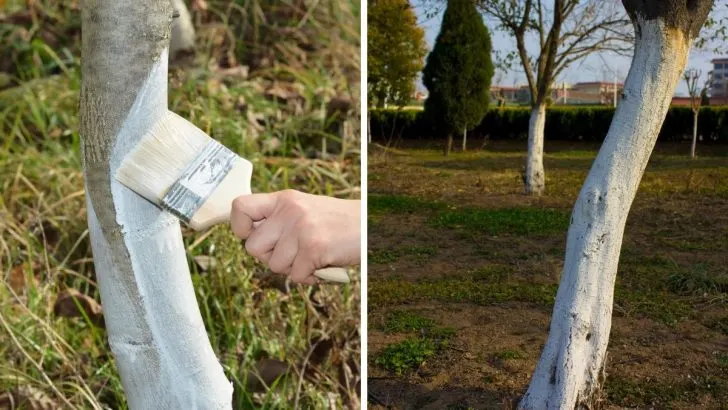Strolling through certain neighborhoods or rural landscapes, you might encounter an unusual sight: trees with their lower trunks painted in white. At first glance, it might seem like an artistic expression or perhaps an odd cultural tradition.
However, the practice of painting tree trunks is quite purposeful, driven by practical reasons that are both ecological and agricultural.
The tradition of using white paint on tree trunks is not merely ornamental. Its primary function is to protect trees from specific environmental and biological threats.
This seemingly simple technique can have profound effects on a tree’s health and longevity, making it a staple practice in many orchard management routines around the world.
Protection from Sunscald and Temperature Fluctuations
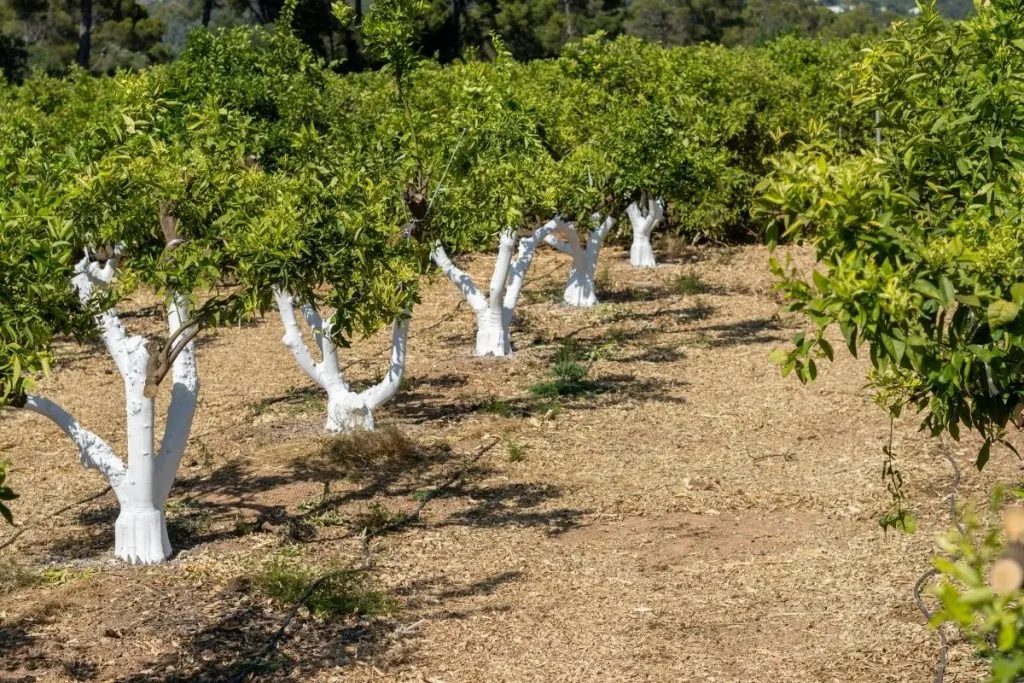
One of the main reasons for painting tree trunks white is to protect them from sunscald. In winter, the sun’s rays can be particularly harsh. After a bright, sunny day, temperatures can drop rapidly.
Such sudden temperature changes can cause the bark to expand and contract, leading to cracks which are ideal entry points for pests and diseases.
The white paint acts as a reflective barrier, bouncing off the harsh sunlight and keeping the tree’s surface temperature more constant.
This helps in minimizing the stress and damage caused by these rapid temperature fluctuations. Think of it as applying sunscreen, not to your skin, but to the tree’s bark.
Pest Deterrence
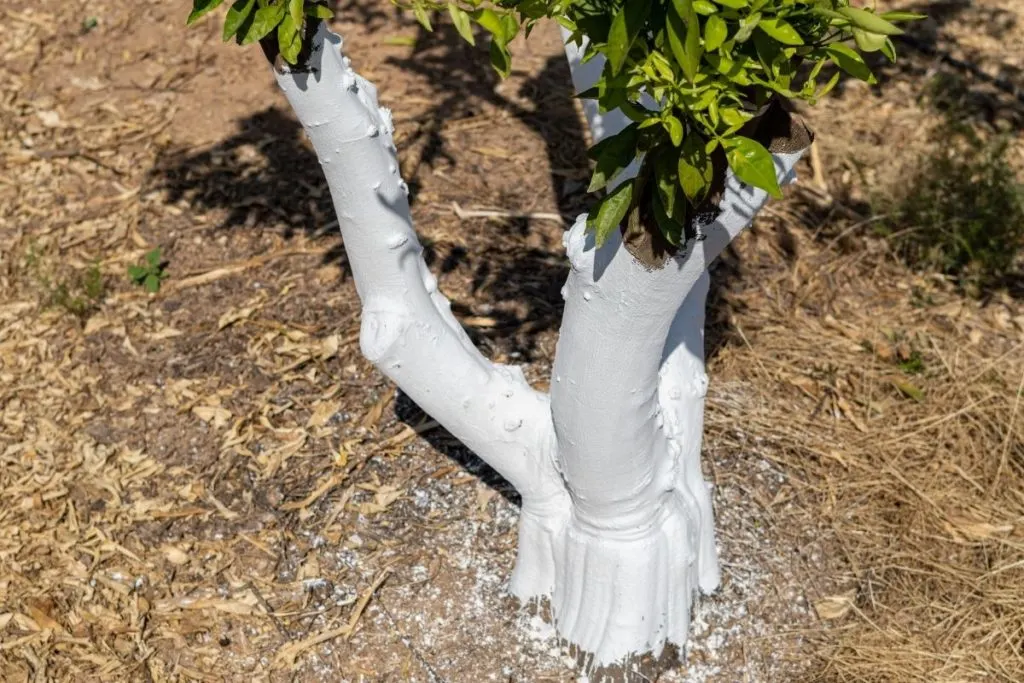
Beyond sun protection, whitewashing tree trunks also serves to deter certain pests. Many insects are less likely to be attracted to the painted bark.
Additionally, the paint can make it more difficult for pests to burrow into the tree, thus acting as a first line of defense against infestations.
In some cases, lime or other additives mixed into the paint can repel insects even further. This natural deterrent is advantageous for organic farmers and gardeners who wish to avoid chemical pesticides.
Preventing Fungal Infections
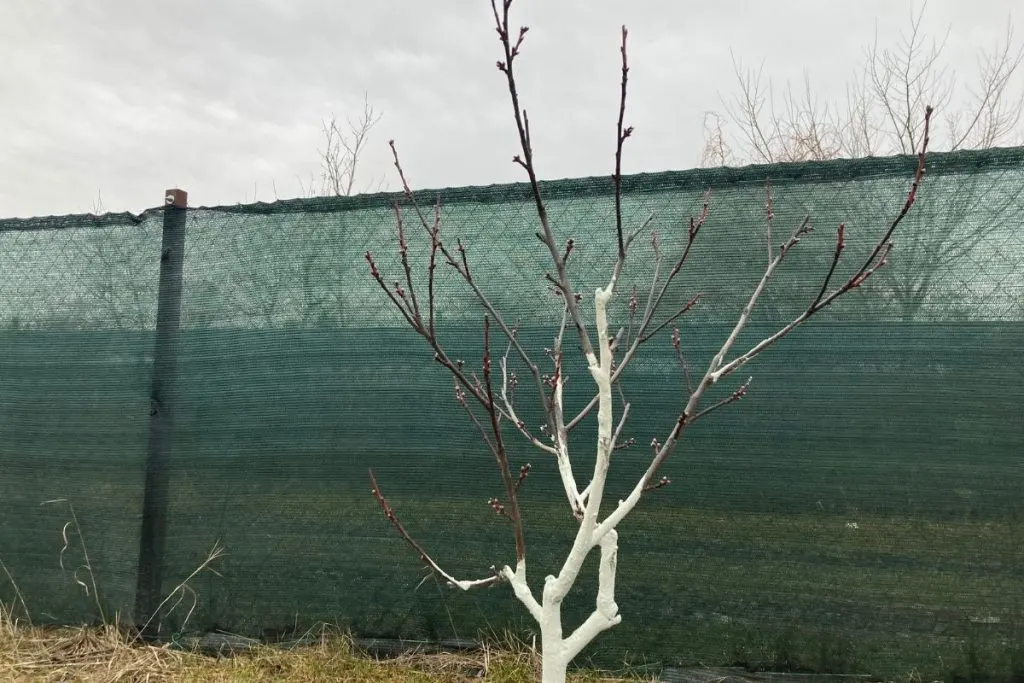
The damp, dark environment created by unpainted bark can be a breeding ground for fungi. This is where the practice of trunk painting comes into play yet again.
White paint keeps the bark relatively dry and less hospitable to fungal spores, significantly reducing the likelihood of infections.
For fruit trees, particularly those in orchards, the prevention of fungal diseases is crucial for maintaining the health and productivity of the trees. By maintaining a dry and well-lit bark surface, the risk of fungus-induced deterioration is considerably minimized.
The Practical Benefits for Farmers and Gardeners
For agricultural practitioners, the benefits of painting tree trunks go beyond aesthetics. Yield optimization is a major goal, and healthy trees play a pivotal role in this.
By adopting this practice, farmers can ensure that their orchards not only survive but thrive under the mechanical stressors of their environment.
Moreover, this technique is cost-effective, requiring minimal investment in materials while delivering significant returns in terms of tree health and fruit quality.
Whether managing large scale orchards or small personal gardens, applying a coat of white paint to your tree trunks might be a wise step in your plant care routine.
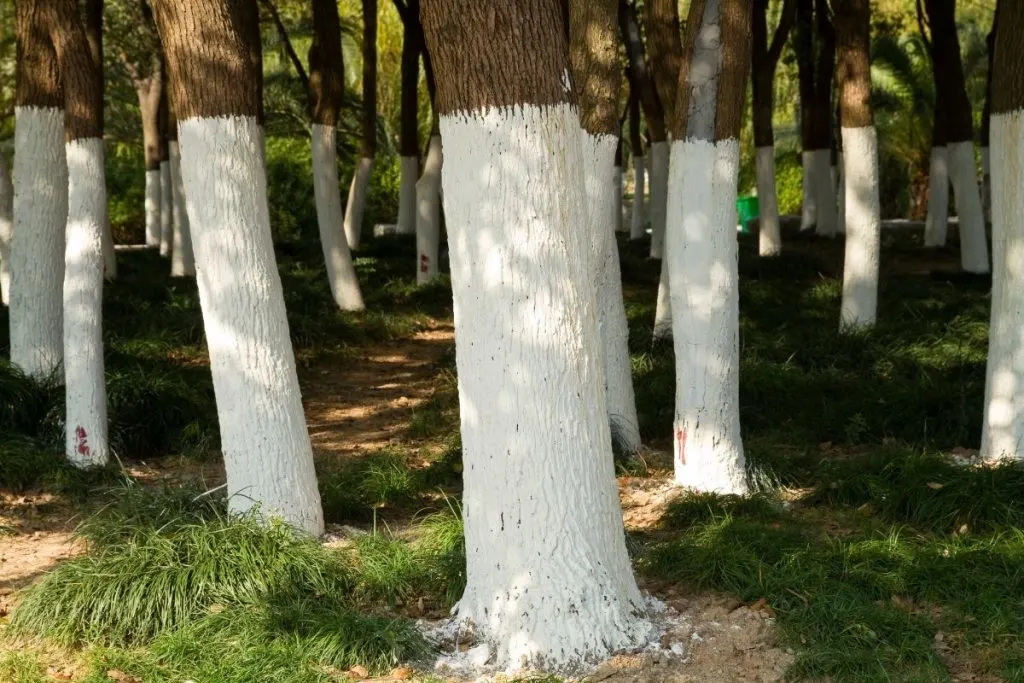
Considerations Before Painting
While the benefits are clear, there are some considerations to keep in mind. It’s important to use the right type of paint – typically a water-based latex paint that is diluted with water. Using the wrong type could potentially harm the tree’s bark, inhibiting its ability to breathe.
Additionally, not all tree species may need such interventions, and the necessity can also depend on regional climate conditions. Before starting, it’s good practice to understand the specific needs of your trees and consult local agricultural guidelines.
A Modern Approach to an Age-old Practice
Painting the trunks of trees white might initially seem like an odd tradition. However, as evidenced, it’s a deliberate and beneficial practice grounded in protective measures and practical agricultural wisdom.
Next time you pass by these uniquely painted trees, you’ll recognize the thought and care that goes into maintaining their health and well-being.
So, whether you’re tending to your own garden or simply appreciating the work of others, remember that this subtle intervention carries a legacy of eco-friendly stewardship.
Maybe it’s time to consider incorporating this practice into your own green endeavors.

